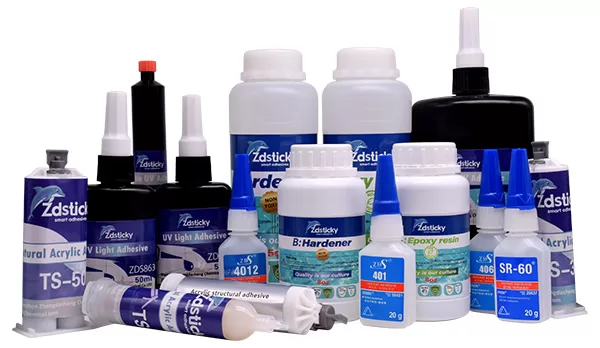Unmatched Flexibility: The Core Advantage of Industrial Silicone Adhesives
Industrial silicone adhesives have changed the game for manufacturing and assembly. Their flexibility and toughness make them the top choice in many settings. Most silicone formulas stay flexible from -60°C to 230°C—sometimes even higher with special blends. This means parts bonded with silicone are less likely to crack or lose strength, even as conditions change or stress levels rise.
Why Flexibility Matters in Manufacturing
Think of devices in cars, power plants, or outdoor electronics. These products face strong vibrations, shocks, and thermal cycles. A rigid bond might break when temperatures jump or parts move. Industrial silicone adhesive stretches and recovers, maintaining its seal and connection over time. Service techs trust silicone for repairs and upgrades because it lasts and moves with the equipment.
RTV Silicone Adhesive Explained
RTV stands for “Room Temperature Vulcanizing.” This type of silicone adhesive cures at normal room air without special ovens. Once exposed to moisture in the air, it starts to set and cross-link—giving a strong, elastic bond within hours. RTV silicone is popular in factories thanks to its simple process: apply, wait, and assemble.
Industrial Silicone Adhesives: High Flexibility & Temperature Resistance
When it comes to sealing, waterproofing, and withstanding extreme temperatures, industrial silicone adhesives deliver like no other. Their unique chemistry creates a seamless barrier against moisture and gases. This keeps sensitive electronics dry, blocks dust, and shields fragile wiring against environmental hazards. ZDS, a trusted adhesive manufacturer in this field, offers a selection of both structural and non-structural silicone adhesives for electronic, automotive, and assembly needs.
Sealing Properties of Silicone Adhesives
Engineered for perfect gap-filling, silicone adhesives form a solid yet flexible seal between surfaces. Their high mobility lets them flow into tiny cracks and rough textures—creating a complete, watertight bond. Many electronics use silicone to isolate circuit boards, connectors, and displays from moisture and corrosive air.
Waterproof Performance & Moisture Barrier
- RTV silicone adhesive resists water, steam, and humidity once fully cured.
- Ideal for outdoor lighting, rooftop modules, and flood-sensitive panels.
- Maintains function through seasonal rains, heat, and cold.
Handling Extreme Temperatures
Not all adhesives survive the hot-cold cycles that electronics and machinery experience. Industrial silicone adhesive stands out with thermal resistance from subzero cold to scorching heat. A typical silicone bond manages daily swings from -60°C to +230°C without losing grip or becoming brittle. Specialized grades—like high-temperature RTV—push even further for aerospace or foundry use.
Expert Insight: “ZDS silicone adhesives undergo strict thermal cycle tests to guarantee performance in real-world electronics,” explains a ZDS R&D lead. “Our bonding trials cover repeated freeze-thaw and bake cycles, paired with salt spray and humidity aging.”
Chemistry and Curing: The Science Behind Silicone Adhesives
Silicone adhesives stand apart due to their unique chemical backbone—polysiloxane, which is a chain of silicon and oxygen atoms. This network gives them outstanding flexibility and resilience, even under harsh stress. Curing (the process where the adhesive sets) happens by cross-linking: molecules form stronger connections, transforming from a liquid to a solid elastomer.
Types of Silicone Adhesives: 1K vs 2K
- 1K (One-Component) RTV Silicone: Cures simply by absorbing moisture from air. No mixing needed.
- 2K (Two-Component) Silicone: Requires precise blending of two parts before use—ideal for thicker bonds or fast assembly.
Cure Mechanisms
Most RTV silicone adhesive products cure at room temperature in 3-24 hours, depending on batch thickness and humidity. Accelerated curing is possible with heat or UV for specific formulas. The cured product achieves a Shore A hardness of roughly 20–50 (soft to firm rubber), and viscosity varies from 30,000 to 100,000 cP for easy bead or trowel application.
Key Properties: Performance Metrics for Engineers
Manufacturers measure silicone adhesive performance through various standardized tests. Lap-shear strength, T-peel resistance, and tensile elongation tell users how well the bond holds up. ZDS regularly conducts ASTM D1002 lap-shear tests and salt spray exposure to ensure adhesives meet demanding industrial expectations.
| Chemistry | Best Substrates | Flexibility | Temperature Resistance | Typical Uses |
|---|---|---|---|---|
| Silicone (RTV) | Glass, metal, plastics, ceramics | High (up to 500%) | -60°C to 230°C+ | Sealing, waterproofing, electronics, lighting |
| Epoxy | Metal, composites | Low–medium | -40°C to 120°C | Structural bonding |
| Polyurethane (PU) | Plastics, stone, concrete | Medium–high | -40°C to 90°C | Flooring, automotive assemblies |
| Acrylic | Metals, plastics | Medium | -40°C to 120°C | Tape, quick assembly |
- Tensile Strength: Typical RTV silicone adhesive offers 2–3 MPa (modest grip, high stretch).
- Elongation: Cured bonds stretch up to 500% before breaking.
- Lap Shear: Remains high after thermal cycling test.
Substrates & Preparation for RTV Silicone Adhesives
Proper surface prep is key for strong, lasting bonds. Industrial silicone adhesive works with many substrate types: glass, stainless steel, ceramics, ABS, polycarbonate, and some treated plastics. Before applying, clean with solvent or isopropanol to remove oils and dust. For plastics like PP or PE, corona or plasma treatment boosts adhesion. In factories, engineers might use primer designed for silicone on hard-to-bond surfaces.
Common Substrates in Electronics
- PCB (printed circuit board) pads
- LED housings (plastic/polycarbonate)
- Sensor casing (aluminum or stainless steel)
- Display frames (glass, acrylic)
Surface Conditioning
Abrading with fine grit or sandpaper creates more surface area for adhesion. Protective gloves keep oils from contaminating surfaces before sealing.
Applications: Electronics & Electrical Devices
Industrial silicone adhesive excels in electronics and electrical applications. Its features protect delicate circuits, connectors, and interfaces from environmental threats. RTV silicone is especially valued for its ability to create custom-shaped seals quickly on production lines.
Moisture-Proofing in Circuit Assemblies
Encapsulating sensitive parts with RTV silicone adhesive prevents corrosion and shorts caused by moisture. LED modules, power supplies, and sensor units rely on silicone for protection in humid or variable climates.
Flexible Potting and Encapsulation
Silicone’s soft cure and low exotherm (<40°C during curing) allow safe potting of heat-sensitive components. In industrial sensors, workers use silicone to fill junction boxes, safeguarding wire splices against dust and splashes.
High-Temperature Resistance for Power Electronics
Modern circuit boards may run hot. Silicone adhesives maintain their seal and insulation in areas that reach 100°C or higher. ZDS high-temperature grades serve solar inverters and automotive ECUs exposed to wide swings in heat.
Outdoor Electronics: Sealing and Waterproofing
- Control cabinets for lighting and traffic systems
- Satellite TV dish receivers and junction boxes
- Smart environmental sensors mounted outside
Processing: How Manufacturers Apply Silicone Adhesives
Smooth application plays a big role in the final bond quality. Most industrial setups use bead, slot-die, or roll-coating methods to apply the adhesive evenly. RTV silicone adhesive can be dispensed from cartridges, syringes, or automated machines with static mixers. Notched trowels are used for thick layers and gap sealing. After application, fixturing may be needed to keep parts aligned while the adhesive cures.
Mixing and Dispensing
- 1K RTV: Direct-to-surface from tube/cartridge, easy press-out
- 2K Silicone: Combine parts A and B per exact ratios, mix thoroughly for a homogenous bond
Pot Life and Cure Time
RTV silicone adhesive gives a 10–30 minute open window for adjustments before cure begins. Full set happens in hours, and it’s safe to use or test within 24 hours.
Quality Control in Factories
ZDS batches undergo ASTM B117 salt spray, heat aging, and humidity cycling to confirm reliability. Documents such as MSDS and lot traceability guarantee consistency and safety for buyers.
Compliance, Safety, and Documentation
Manufacturers meet strict standards when producing industrial silicone adhesive. ZDS complies with REACH and RoHS for environmental safety and offers low-VOC (volatile organic compound) versions to protect workers and end users. Each shipment includes Safety Data Sheets (SDS) and ISO 9001 quality records.
Certifications and Testing
- ASTM B117 (salt spray resistance)
- Thermal cycling (freeze-thaw exposure)
- REACH/RoHS (chemical safety)
Buyers looking for reliable silicone adhesives should check for documentation before use. Reputable suppliers like ZDS provide full compliance paperwork, technical specs, and support for custom projects.
Choosing the Right Industrial Silicone Adhesive
Not all silicone adhesives fit every job. Factors like gap size, substrate type, cure speed, and required flexibility shape the selection process. For electronics, look for high-mobility RTV grades. For outdoor or high-heat settings, choose products marked for temperature resistance and certified to pass salt spray and humidity aging.
- Specify application (sealing, waterproofing, potting)
- Check substrate compatibility (make sure adhesive sticks)
- Ask about cure time and pot life for your process
Where to Buy and What to Look For
ZDS offers direct support to manufacturers who need tailored advice for selecting silicone adhesives. Look for product samples, technical data sheets, and third-party compliance test results. For complex projects, request guidance on best application methods and automation solutions.
Frequently Asked Questions
What makes industrial silicone adhesive ideal for electronics?
Silicone adhesives provide strong sealing, waterproofing, and flexibility in electronic assemblies, protecting sensitive components against moisture and thermal cycles.
How does RTV silicone adhesive cure?
RTV silicone cures at room temperature, reacting with air moisture to form a strong, elastic bond without heat or UV exposure.
What temperature range can silicone adhesives withstand?
Standard silicone adhesives handle temperatures from -60°C up to 230°C, with special grades reaching higher for demanding environments.
Which substrates are compatible with industrial silicone adhesive?
Glass, metal, ceramics, and many plastics are suitable; surface cleaning and treatments like primer improve bonding on low-surface plastics.
How is surface preparation done before applying silicone adhesive?
Surfaces must be degreased and free of dust; for plastics, abrasion or plasma treatment ensures the best adhesion possible.
What documents should buyers request for industrial silicone adhesives?
Buyers should ask for SDS, ISO 9001 records, REACH/RoHS certifications, and detailed technical data sheets proving performance claims.








